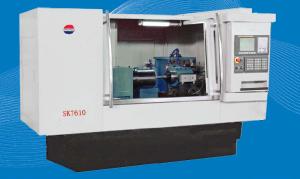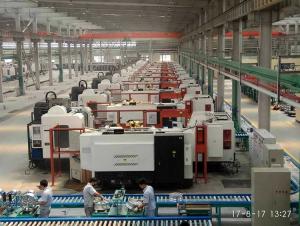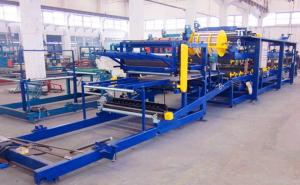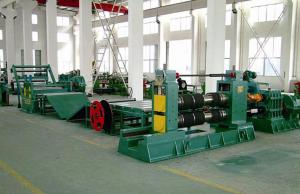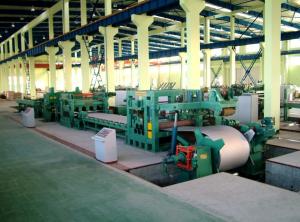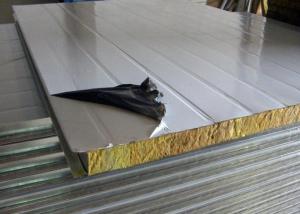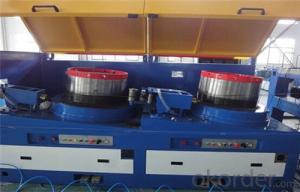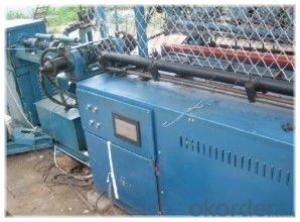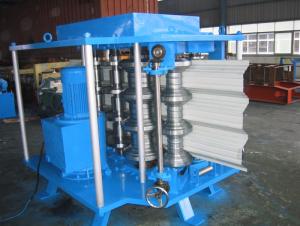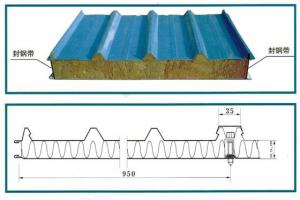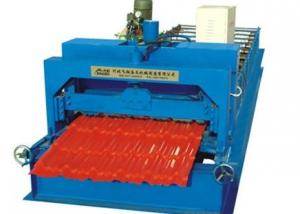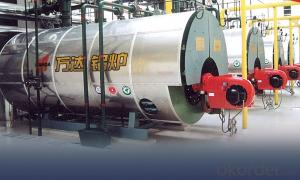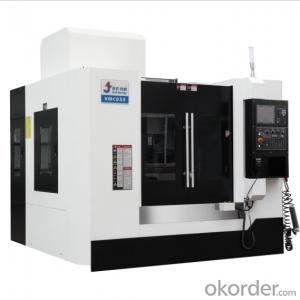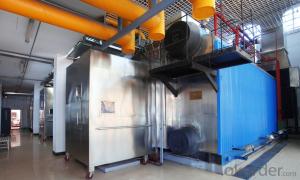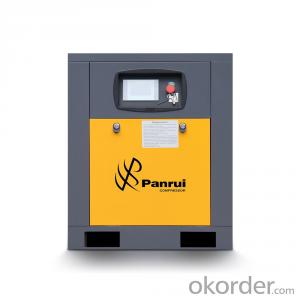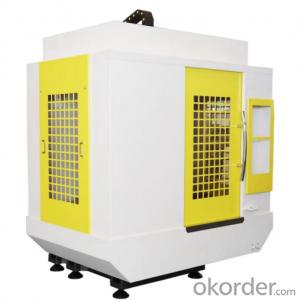CNC machine tool is the abbreviation of Computer numerical control machine tools.
- Loading Port:
- Tianjin
- Payment Terms:
- TT or LC
- Min Order Qty:
- 1 set
- Supply Capability:
- 1000 set/month
OKorder Service Pledge
OKorder Financial Service
You Might Also Like
CNC machine tool is the abbreviation of Computer numerical control machine tools. It is an automatic machine tool equipped with a program control system. The control system can logically process the program specified by the control code or other symbolic instructions, decode it, express it with coded numbers, and input it into the numerical control device through the information carrier. After the arithmetic processing, various control signals are sent by the numerical control device to control the movement of the machine tool, and the parts are automatically processed according to the shape and size required by the drawing.
CNC machine tool solves the problem of complex, precise, small batch and multi-variety parts processing. It is a flexible and efficient automatic machine tool. It represents the development direction of modern machine tool control technology and is a typical mechanical and electrical integration. Chemical products.
Main Advantage
The operation and monitoring of the CNC machine tool are all completed in this CNC unit, which is the brain of the CNC machine tool. Compared with ordinary machine tools, CNC machine tools have the following characteristics:
1. Strong adaptability to the processing object and the characteristics of single-piece production of molds and other products, providing a suitable processing method for the manufacture of molds;
2. High processing accuracy and stable processing quality;
3. Multi-coordinate linkage can be performed, and parts with complex shapes can be processed;
4. When the processing parts change, generally only need to change the CNC program, which can save production preparation time;
5. The machine tool itself has high precision and rigidity, and can choose a favorable amount of processing and high productivity (generally 3 to 5 times that of ordinary machine tools);
6. The high degree of machine tool automation can reduce labor intensity;
7. Conducive to the modernization of production management. CNC machine tools use digital information and standard codes to process and transmit information, and use computer control methods, laying a foundation for the integration of computer-aided design, manufacturing and management;
8. Higher requirements for the quality of the operating personnel and higher technical requirements for the maintenance personnel;
9. High reliability.
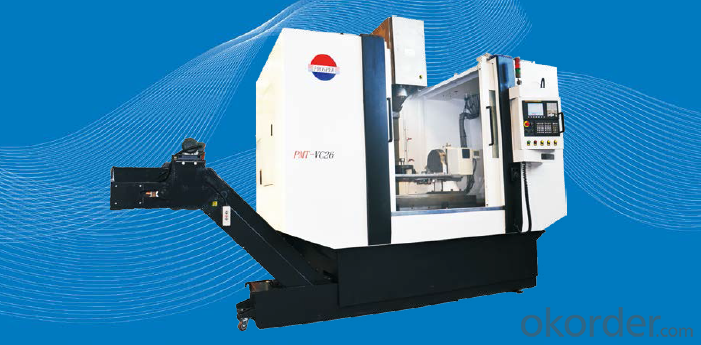
CNC machine tool is an automatic machine tool equipped with a program control system, which can make the machine tool move and process parts according to the programmed program. It integrates the latest technology of machinery, automation, computer, measurement, microelectronics, etc., and uses a variety of sensors. The sensors used in CNC machine tools are mainly photoelectric encoders, linear gratings, proximity switches, temperature sensors, Hall sensors, current Sensors, voltage sensors, pressure sensors, liquid level sensors, resolvers, induction synchronizers, speed sensors, etc., are mainly used to detect position, linear and angular displacement, speed, pressure, temperature, etc.
1. The requirements of CNC machine tools for sensors
1) High reliability and strong anti-interference;
2) Meet the requirements of accuracy and speed;
3) Easy to use and maintain, suitable for the operating environment of the machine tool;
4) Low cost.
Different types of CNC machine tools have different requirements for sensors. Generally speaking, large machine tools require high speed response, and medium and high precision CNC machine tools mainly require accuracy.
2. Application of inductive synchronizer
Inductive synchronizers are made using the principle that the mutual inductance of two planar windings varies with position. Its function is to convert the angle or linear displacement into the phase or amplitude of the induced electromotive force, which can be used to measure the linear or angular displacement. According to its structure, it can be divided into linear type and rotary type. The linear induction synchronizer is composed of fixed length and sliding scale. The fixed length is installed on the machine bed. The sliding scale is installed on the moving parts and moves with the worktable. The stator of the rotary induction synchronizer is a fixed disk and rotor. For spinning discs. The induction synchronizer has the advantages of high precision and resolution, strong anti-interference ability, long service life, simple maintenance, long-distance displacement measurement, good manufacturability and low cost. Rotary induction synchronizers are widely used in turntables of machine tools and instruments and various rotary servo control systems.
- Q:Can metal engraving machinery be used for engraving on coins or tokens?
- Certainly! Metal engraving machinery is capable of engraving on both coins and tokens. These machines are specifically designed to etch or carve intricate designs onto a wide range of metal surfaces, including coins and tokens. Various techniques, such as rotary engraving, laser engraving, or diamond drag engraving, are employed by these machines to achieve detailed and accurate engravings on metal. By utilizing appropriate settings and tools, metal engraving machinery can yield superior-quality engravings on coins and tokens, thereby augmenting their visual allure and intrinsic worth.
- Q:How does a metal engraving machine handle different types of engraving patterns, such as parallel lines or dot matrix?
- A metal engraving machine handles different types of engraving patterns, such as parallel lines or dot matrix, by utilizing specific engraving tools and techniques. For parallel lines, the machine adjusts the positioning and movement of the engraving tool to create evenly spaced lines in the desired direction. In the case of dot matrix patterns, the machine uses a tool that rapidly moves up and down, creating a series of closely spaced dots to form the desired design. These machines are programmed to interpret and execute various engraving patterns accurately, delivering consistent and precise results.
- Q:Can metal engraving machinery be used on curved surfaces?
- Yes, metal engraving machinery can be used on curved surfaces.
- Q:What is the difference between mechanical engraving machines and laser engraving machines?
- Mechanical engraving machines and laser engraving machines are both used for engraving designs or text onto various materials, but they differ in their working mechanisms and capabilities. Mechanical engraving machines operate by physically cutting into the material using a rotating tool, such as a diamond or carbide cutter. These machines typically use a computer-controlled system to guide the movement of the tool, allowing for precise and intricate designs. Mechanical engraving machines are generally suitable for a wide range of materials, including metal, wood, plastic, and glass. However, they may require different cutting tools or settings for different materials. On the other hand, laser engraving machines utilize a high-powered laser beam to engrave the material's surface. The laser beam is controlled by a computer, which directs it to vaporize or melt the material, creating the desired design or text. Laser engraving machines offer several advantages over mechanical engraving machines. Firstly, they can engrave with higher precision, allowing for detailed and intricate designs. Additionally, laser engraving machines are highly versatile and can work with various materials, including wood, plastic, metal, glass, leather, and even some fabrics. They can also engrave curved or irregular surfaces more easily than mechanical engraving machines. Another significant difference between the two is the speed of engraving. Laser engraving machines are generally faster than mechanical engraving machines, especially when it comes to large or complex designs. This makes them more efficient for high-volume production or time-sensitive projects. However, there are some limitations to laser engraving machines as well. For instance, they may not be suitable for certain materials that are sensitive to heat or can be damaged by the laser beam. Additionally, laser engraving machines may have limitations in terms of depth control, as the laser tends to remove material uniformly across the surface, resulting in a shallower engraving. In summary, mechanical engraving machines and laser engraving machines differ in their engraving mechanisms, precision, materials compatibility, speed, and depth control. While mechanical engraving machines offer precision and versatility, laser engraving machines provide higher precision, versatility, and faster engraving speeds, making them more suitable for various applications.
- Q:What are the common software troubleshooting steps for metal engraving machinery?
- The common software troubleshooting steps for metal engraving machinery typically include checking the power supply and connections, ensuring the software is up to date, examining the settings and configurations, restarting the machine and software, and contacting technical support if necessary.
- Q:Can metal engraving machinery be used for engraving on bronze?
- Certainly, the utilization of metal engraving machinery is applicable for engraving on bronze. Bronze, an alloy primarily composed of copper, incorporates diverse quantities of other metals, like tin, zinc, and lead. Metal engraving machinery is specifically engineered to function on a variety of metals, bronze included. This machinery typically employs high-speed rotary tools or lasers to inscribe designs, patterns, or text onto the metal's surface. By employing suitable settings and techniques, bronze can be effortlessly engraved utilizing metal engraving machinery, thus enabling accurate and intricate engravings on this particular metallic material.
- Q:How does metal engraving machinery handle different engraving speeds or accelerations on delicate materials?
- Metal engraving machinery is designed to handle different engraving speeds or accelerations on delicate materials in a precise and controlled manner. These machines use advanced technology and features that allow for customization and adjustment of various parameters to ensure proper engraving on delicate materials. One of the key features in metal engraving machinery is the ability to control the spindle speed, which determines the cutting speed of the engraving tool. When dealing with delicate materials, such as thin metals or soft metals, the spindle speed can be adjusted to a lower setting to reduce the cutting force and minimize the risk of damaging the material. This allows for a more gentle and controlled engraving process. Additionally, metal engraving machinery often incorporates options for adjusting the acceleration and deceleration rates. These settings control how quickly the machine starts and stops the engraving process. By setting a lower acceleration rate, the machine can gradually increase the speed, reducing the impact on delicate materials and preventing sudden movements that could cause damage. Furthermore, some metal engraving machinery is equipped with automatic depth control systems. These systems allow the machine to adjust the engraving depth based on the material being engraved. When working with delicate materials, the machine can be programmed to engrave at a shallower depth to ensure minimal contact and reduce the risk of causing any damage. Overall, metal engraving machinery is designed with the flexibility to handle different engraving speeds or accelerations on delicate materials. By adjusting parameters such as spindle speed, acceleration rates, and engraving depth, these machines can ensure precise and controlled engraving without compromising the integrity of the delicate materials being worked on.
- Q:What are the different types of engraving accessories available for metal engraving machinery?
- There are several different types of engraving accessories available for metal engraving machinery. These accessories are designed to enhance the capabilities of the machinery and allow for more precise and intricate engraving on metal surfaces. One common type of accessory is the diamond engraving tool. These tools are made with a diamond tip, which offers exceptional hardness and durability. Diamond engraving tools are ideal for engraving on hard metals such as stainless steel, titanium, and even hardened steel. They provide clean and precise cuts, resulting in high-quality engravings. Another type of accessory is the carbide engraving tool. These tools are made with carbide tips, which are highly resistant to wear and can withstand high temperatures. Carbide engraving tools are suitable for engraving on softer metals such as aluminum, brass, and copper. They offer excellent precision and longevity, making them a popular choice for metal engraving. In addition to the engraving tools, there are also various accessories available for holding and securing the metal piece during engraving. These include vices, clamps, and magnetic holders. These accessories ensure that the metal piece remains stable and secure, allowing for accurate and steady engraving. Furthermore, there are specialized engraving accessories designed for specific applications. For instance, there are rotary engraving attachments that can be used to engrave cylindrical objects such as pens or bottles. These attachments allow for 360-degree engraving, making them perfect for personalized gifts or promotional items. Some metal engraving machines also offer optional accessories such as laser engraving modules. These modules use laser technology to engrave on metal surfaces, providing a different engraving technique compared to traditional engraving tools. Laser engraving offers high precision and can create intricate designs or even reproduce photographs on metal. Overall, the range of engraving accessories available for metal engraving machinery is vast, catering to different materials, applications, and engraving techniques. Whether you need tools for engraving on hard metals, soft metals, or specialized objects, there is likely an accessory available to meet your specific needs.
- Q:Can metal engraving machinery be used for engraving on titanium?
- Engraving on titanium is indeed possible with metal engraving machinery. Titanium, being a durable and strong metal, is well-suited for engraving purposes. The hardness of titanium may vary depending on the alloy used, but most industrial-grade titanium can be engraved using metal engraving machinery. However, it is crucial to take into account the specific capabilities and settings of the engraving machinery to ensure compatibility with titanium. Some engraving machines may require adjustments to the speed, feed rate, or tooling to achieve effective engraving on titanium. Moreover, it is advisable to utilize high-quality engraving tools or diamond-tipped tools specifically designed for engraving on tough metals like titanium.
- Q:Can metal engraving machinery be used for both small and large-scale projects?
- Yes, metal engraving machinery can be used for both small and large-scale projects. These machines are designed to accommodate different sizes and types of metal objects, allowing for versatility in engraving tasks. Whether it's a small jewelry piece or a large industrial component, metal engraving machinery can effectively handle a wide range of project sizes.
1. Manufacturer Overview |
|
|---|---|
| Location | |
| Year Established | |
| Annual Output Value | |
| Main Markets | |
| Company Certifications | |
2. Manufacturer Certificates |
|
|---|---|
| a) Certification Name | |
| Range | |
| Reference | |
| Validity Period | |
3. Manufacturer Capability |
|
|---|---|
| a)Trade Capacity | |
| Nearest Port | |
| Export Percentage | |
| No.of Employees in Trade Department | |
| Language Spoken: | |
| b)Factory Information | |
| Factory Size: | |
| No. of Production Lines | |
| Contract Manufacturing | |
| Product Price Range | |
Send your message to us
CNC machine tool is the abbreviation of Computer numerical control machine tools.
- Loading Port:
- Tianjin
- Payment Terms:
- TT or LC
- Min Order Qty:
- 1 set
- Supply Capability:
- 1000 set/month
OKorder Service Pledge
OKorder Financial Service
Similar products
New products
Hot products
Hot Searches
Related keywords




